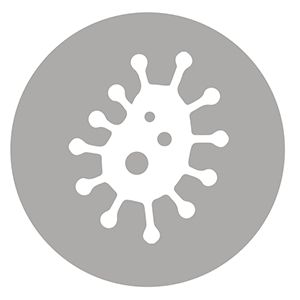Group 7. Other diseases
 |
Disease tools: 27. Hand, foot and mouth disease (HFMD) 28. Unexplained clusters of illness or death 29. Acute malnutrition (see Disease tool) |
Hand, foot and mouth disease
Hand, foot and mouth disease (HFMD) is a common highly infectious disease of infants and children caused by a virus. It is characterized by fever, painful sores in the mouth, and a rash with blisters on hands, feet and also buttocks. It is common in many Asian countries.
How is the disease transmitted?
HFMD is mainly transmitted by direct contact with the saliva, nose mucous, blister fluid or faeces of an infected person. Infected persons are most contagious during the first week of the illness, but sometimes they are able to transmit the disease for several weeks (since the virus persists in stools).
HFMD is not transmitted to or from pets or other animals.
Any person who has not already been infected is at risk of infection, but not everyone who is infected becomes ill.
HFMD occurs mainly in children under 10 years old, and most commonly in children younger than five years of age.
What symptoms does it cause?
A fever and sore throat are usually the first symptoms of hand, foot and mouth disease. Usually, one or two days after the fever begins, painful blisters develop in the mouth.
A non-itchy skin rash develops over one to two days with flat or raised red spots, some with blisters. The rash is usually located on the palms of the hands and soles of the feet; it may also appear on the buttocks and/or genitals.
A person with HFMD may not have symptoms or may have only the rash or only mouth ulcers.
| The epidemic |
|---|
|
Who? Where? When? |
How to prevent the spread of the disease?
No specific antiviral drugs or vaccines protect against HFMD. The risk of infection can be lowered by good hygiene practices and prompt medical attention for children showing severe symptoms.
Preventive measures include:
- Covering the mouth and nose when sneezing or coughing.
- Being clean and observing good hygiene practices at home and in public places (schools, kindergartens, etc.).
- Cleaning and disinfecting contaminated surfaces and dirty items with soap and water. • Washing hands with soap.
- Keeping sick children home from school, kindergarten or other gatherings until they have recovered.
- Avoiding close contact with people with HFMD.
- Identifying sick children rapidly and referring them to a health clinic when required.
- Seeking medical care.
- Ensuring that children have access to safe, clean drinking water.
- Use of appropriate sanitation facilities.
How to deal with cases of the disease?
Currently, there is no specific treatment for HFMD. Patients should drink plenty of water and may require treatment to ease their symptoms, in particular to reduce fever and the pain of ulcers. If the fever persists and child is very sick, it is important to seek medical care.
How to detect an epidemic?
When many more people than usual get symptoms and are diagnosed with the disease.
How to deal with an epidemic?
If an epidemic of HFMD occurs in your community, you should take the following actions:
- Build the trust of members of the community.
- Involve members of the community in efforts to control the epidemic.
- Familiarize yourself with the culture of the community.
- Provide information about the disease and its transmission and what can be done to prevent it.
- Take steps to detect sick people promptly and refer severe cases to health facilities.
- Promote recommended hygiene and sanitation practices.
- Ensure that members of the community have access to safe and clean water.
What can volunteers do?
Volunteers can contribute by promoting recommended health practices and by identifying cases and referring them to appropriate health facilities for proper care and treatment. You can:
- Make house-to-house visits in cooperation with the community to assess living conditions and detect people with HFMD symptoms.
- Refer severe cases to a health facility.
- Make sure that people have access to healthy food and, if malnutrition is a problem, make sure that children receive good nutrition.
- Give psychosocial support to sick people and their families.
- Promote recommended health and sanitary practices, by explaining:
- How HFMD is transmitted.
- How to prevent HFMD.
- How to care for sick children.
Underline that it is important to:
- Take sick children to a health facility.
- Provide good nutrition.
- Give sick children fluids.
Clusters of unexplained illnesses or deaths
As mentioned earlier in the manual, sometimes diseases can be due to a completely new organism (recent examples are SARS and MERS), or health authorities need time to ascertain what is causing people to become sick or die. If you are unsure what is causing an epidemic, behave as you would if you were dealing with Ebola, Marburg fever or Lassa fever. Take the highest level of precaution until you are sure how the disease is spread and how best to protect people.